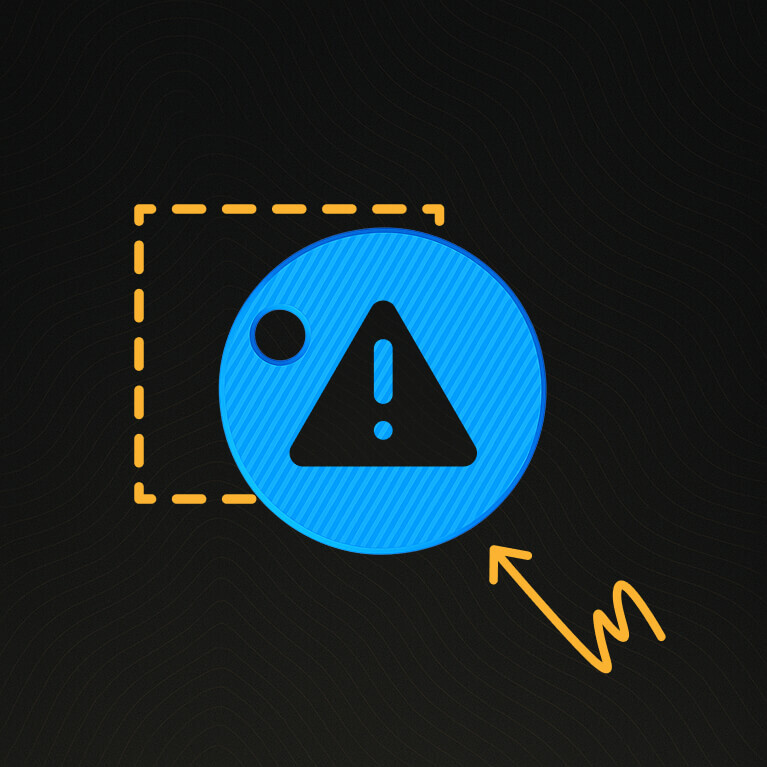A high-risk merchant account is a type of payment processing account for businesses that are more prone to chargebacks, fraud, or regulatory scrutiny. High-risk merchants often operate in industries like adult entertainment, CBD, supplements, online gambling, and travel. These are sectors that banks and traditional payment processors view as risky.
If you’ve ever had your application declined by a mainstream processor or been shut down without warning, you’ve likely been classified as high-risk.
Why are certain businesses considered high-risk?
Processors label merchants as high-risk for a number of reasons:
- Industry type: Certain industries (e.g. adult, nutraceuticals, CBD, subscription services) are automatically high-risk.
- Chargeback ratios: If your chargeback rate exceeds 0.9%, you’re considered high-risk by Visa and Mastercard standards.
- Processing volume: Startups with very high monthly volume or inconsistent history can raise red flags.
- Credit or fraud risk: A history of fraud, poor credit, or high average ticket size increases your risk category.
- Regulatory exposure: Selling products that are legally gray or under strict regulation.
According to Visa, merchants with over 0.9% chargeback ratio are considered high-risk — compared to the 0.3% average in low-risk categories.
How to get approved for a high-risk merchant account
Getting approved for a high-risk account isn’t about convincing a bank you’re not risky — it’s about finding a provider who understands your business and is willing to underwrite it properly.
Here’s how to improve your odds:
- Be transparent about your business model, products, and marketing practices.
- Have a professional website with a visible refund policy, terms and conditions, and contact information.
- Provide strong documentation: Past processing statements, bank records, business licenses.
- Minimize chargebacks with clear product descriptions, fulfillment timelines, and customer support.
What you’ll need to apply
Underwriters will typically require the following information and documentation to perform a review. The high-risk underwriting process usually calls for extensive documentation compared to standard businesses.
- Legal business entity and EIN
- Government-issued ID for the business owner(s)
- 3–6 months of past processing statements (if available)
- Voided check or bank letter
- Website URL that includes terms, privacy policy, and refund policy
- Financials: bank statements, PNLs, tax returns and balance sheets.
What is underwriting for high-risk merchants?
Underwriting is the risk assessment process a payment processor uses to decide whether to approve your account.
For high-risk merchants, underwriting is more in-depth and includes:
- Reviewing your product catalog to ensure compliance with card brand rules
- Checking your business and personal credit
- Evaluating processing history (chargebacks, refunds, average ticket size)
- Ensuring your website is compliant with FTC, card brand, and local laws
This process can take anywhere from a few hours to several days, depending on the complexity of your business.
Addendums
Addendums are required by sponsoring banks to ensure that merchants in certain regulated or high-risk industries comply with both card brand rules and federal laws (such as the Bank Secrecy Act, the Controlled Substances Act or the Credit Repair Organizations Act). Common industries that require addendums include:
- Vape & Tobacco
- Credit Repair
- CBD & Cannabis Related Businesses
- Gambling, Casinos & Fantasy Sports
- Firearms & Ammunition
- Adult Entertainment
- Dept Collection
- Online Dating
- Telemarketing
- Travel & Timeshares
- Nutraceuticals
- Telehealth
Card brand registration fees
Visa and Mastercard also require certain high-risk MCCs (Merchant Category Codes) to pay an annual registration fee in order to accept electronic payments on their network. These fees are part of the card brands’ High Brand Risk Monitoring Programs (e.g. Visa’s High Brand Risk MCC Program and Mastercard’s BRAM), which are designed to mitigate reputational risk and fraud. Being classified under these programs means your business is subject to enhanced scrutiny, reporting requirements and stricter underwriting standards from acquiring banks.
| Industry | MCC | Card Brand | Fee | Notes |
|---|---|---|---|---|
| Vape / Tobacco | 5993 | Visa, Mastercard | $500–$1,000 | Applies to online and retail sales |
| Firearms / Ammo | 5941 | Visa | ~$500 | Commonly flagged as elevated-risk |
| Adult Entertainment | 5967, 7995 | Visa, Mastercard | $500–$1,000 | Includes cams, content, adult dating |
| Gambling | 7995 | Both | $500–$1,000+ | Covers fantasy, sports, lottery |
| Credit Repair | 7276 | Mastercard | $500–$1,000 | For CROA compliance, added scrutiny |
| Dating Services | 7273 | Visa | $500 | Often flagged if recurring + UGC |
| Online Tech Support | 7379 | Mastercard | Often $500+ | High fraud and consumer complaints |
How much does a high-risk merchant account cost?
High-risk payment processing comes with higher fees than standard merchant accounts:
- Transaction Fees: 2.9% – 14.00% + $0.10 – $0.50 per transaction
- Monthly Account Fees: $10 – $50
- Rolling Reserve: 5 – 10% of daily volume held for 3 days – 6 months
- Chargeback Fees: $20 – $35 per occurrence
These costs reflect the higher liability processors take on when boarding high-risk businesses.
Choosing the right high-risk payment processor
Not all merchant service providers are built to handle high-risk businesses. The right partner won’t just approve your account; they’ll help you stay operational, compliant, and ahead of risk. Here’s what to look for when evaluating providers:
- Industry alignment: Make sure your provider understands the nuances of your vertical. Whether you’re in supplements, gambling, adult, or emerging tech, specialized experience matters. It means fewer surprises and more tailored support.
- Fee clarity: High-risk accounts usually come with elevated costs. You want a transparent fee structure with no vague “regulatory” charges or buried line items. Look for providers that can clearly explain their pricing model, including monthly minimums, chargeback fees, and reserve policies—and justify them.
- Reasonable contract terms: Be wary of providers who lock you into long-term contracts with steep cancellation penalties. Flexibility is important in high-risk environments, especially as your needs evolve or if regulations change.
- Credibility and track record: Anyone can claim they underwrite high-risk merchant accounts. Look into the company’s history, leadership, and client base. Have they worked with businesses like yours before? Are they a registered ISO? Do they manage their own risk, or an agency who rely entirely on a backend processor?
- Security and fraud tools: In high-risk industries, fraud and chargebacks aren’t rare—they’re expected. Your provider should offer active fraud controls like AVS, 3DS, and velocity filters, and be ready to guide you on broader prevention strategies, not just basic gateway setups.
- Gateway compatibility: Your merchant account and payment gateway need to work seamlessly. Look for providers that offer integrated solutions or have a solid track record with trusted high-risk gateways like NMI, Authorize.net, or direct API integrations with routing logic.
- Support that shows up: In high-risk, problems rarely stick to business hours. You need a support team that’s responsive, knows your setup, and can escalate issues fast—especially when something breaks or payouts get delayed.
- Global capability: If you’re selling internationally, make sure your provider supports multi-currency processing, cross-border settlement, and has experience with regional compliance.
- Hands-on risk management: You need more than just reporting dashboards. Look for providers who actively monitor your account, flag risk signals, and offer proactive guidance before issues escalate.
- Contract transparency: Before signing anything, read the fine print. Watch for rolling reserves, early termination fees, or clawback clauses. If something isn’t clear, ask. If they won’t explain it, walk away.
Managing risk and maintaining long-term processing
Getting approved is just the beginning. Staying operational means actively managing risk. Here’s how to stay ahead:
- Control chargebacks early: Use real-time alerts, pre-dispute tools, and consistent refund policies. Dispute chargebacks strategically, and analyze trends to fix root causes—like unclear billing descriptors or customer support breakdowns.
- Stay vigilant on fraud: Use a layered fraud stack. Go beyond basic filters and include tools that score transactions dynamically, flag anomalies, and adapt to emerging fraud patterns. Keep an eye out for mismatched IPs, suspicious shipping addresses, or large, unusual orders.
- Maintain strong documentation: Clean records make or break dispute outcomes. Save proof of delivery, signed order confirmations, and customer communications. If a chargeback hits, documentation is your best defense.
- Communicate with customers
Set clear expectations upfront. Share refund and return policies, respond quickly to inquiries, and make it easy for buyers to resolve problems without going to their bank. - Monitor transaction behavior: Use dashboards and tools to track unusual activity. A spike in refunds, rapid order volume increases, or multiple declined payments could be red flags.
- Stay compliant: High-risk rules evolve fast. Stay up to date on card brand requirements, data security laws (like PCI and GDPR), and any industry-specific restrictions. Bring in compliance or legal experts when needed.
- Plan for reserves and holds: Understand how reserves work and how long your funds might be tied up. Build a buffer to absorb the impact, and where possible, negotiate release timelines.
- Use clear billing descriptors: Vague descriptors lead to disputes. Use names customers recognize. If your provider supports dynamic billing descriptors, take full advantage.
- Customize your risk profile: Your fraud and chargeback tools should fit your business. Work with your provider to set thresholds, routing rules, or transaction filters that reflect your customer behavior.
- Learn from the community: You’re not alone. Other high-risk merchants face similar challenges. Join forums, go to industry events, and build connections. Sometimes the best solutions come from other operators, not your provider.
Frequently Asked Questions
Can I use Stripe or Square as a high-risk merchant?
Probably not. Platforms like Stripe, PayPal, and Square prohibit most high-risk industries in their terms. You might get away with it for a while, but eventually, your account will likely be shut down and funds held.
What’s a rolling reserve?
A rolling reserve is when the processor withholds a percentage of your sales (usually 5–10%) for a set period (usually 3–6 months) to cover potential chargebacks or fraud.
How long does it take to get approved?
Some high-risk processors offer same-day approvals. Others may take 3–7 business days depending on underwriting complexity.
Do I need a gateway?
Yes, in most cases. Your merchant account will typically be paired with a processor agnostic gateway like Authorize.net or NMI. Some high-risk payment service providers (PSPs), like ECRYPT, offer an end-to-end solution that includes both the merchant account and the gateway. This gives merchants more flexibility, unified support, and a single source of truth for settlements, chargebacks, and custom integrations..
Final thoughts
A high-risk merchant account isn’t a punishment. It’s a specialized financial service designed to support businesses that operate in regulated or specialized industries — many of them are essential. With the right partner, you can get reliable payment processing, lower your risk of shutdown, and even reduce your fees over time.
Looking for a partner who actually understands your business?
Contact our team for guidance on how to get approved fast.


